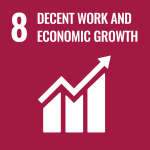

GEN1000 for students admitted to Year 1 before AY2025/26, Year 2 before AY2026/27, or Year 3 before AY2027/28, except with the permission of the Module Coordinator
Nil
This module explores the fundamental principles of insurance and its vital role in fostering a sustainable future for society. Students can learn about the history and development of insurance, addressing the needs of insurance to the society and the impact of insurance on social stability and human development. This module discusses the public policies related to insurance and analyses the key social insurances with emphasis on social responsibility in personal and social contexts.
Upon completion of this module, students should be able to:
1. Introduction
1.1. Insurance principles
1.2. History and development of insurance
1.3. Understanding social insurance
1.4. Understanding the relationship between insurance and societal needs for a sustainable future
2. Social Insurance
2.1. Social issues and needs, values and factors
2.2. Purpose and impact of social insurance to the society
2.3. Analysis on key social insurance
2.4. Wealth redistribution effect of social insurance
2.5. Limitations and emerging phenomena
3. Personal Insurance
3.1. Essential insurances for social stability
3.2. Essential insurances for human development
3.3. Comparison of private insurance, social insurance, and public assistance
3.4. Public policies related to insurance